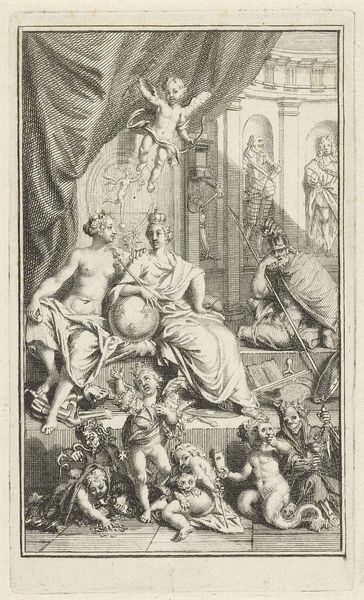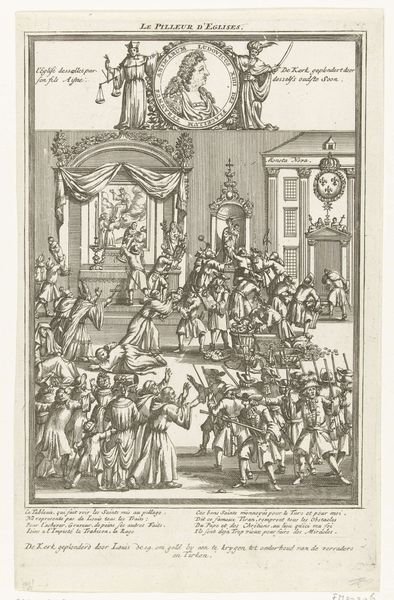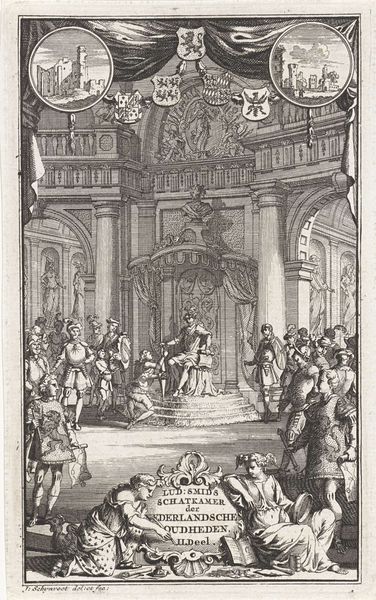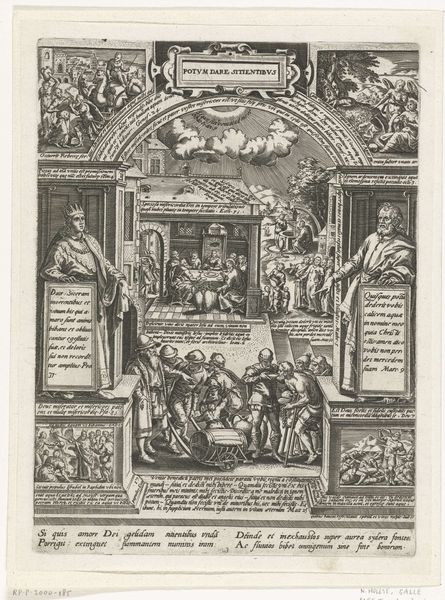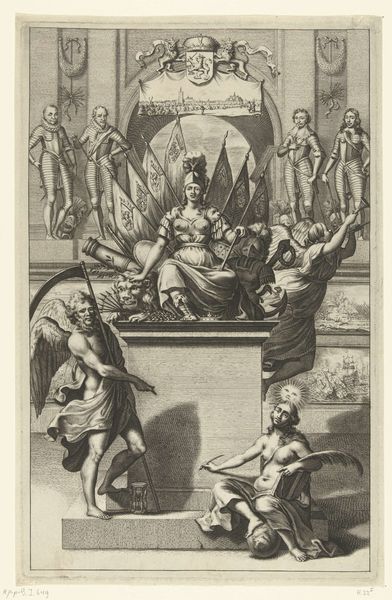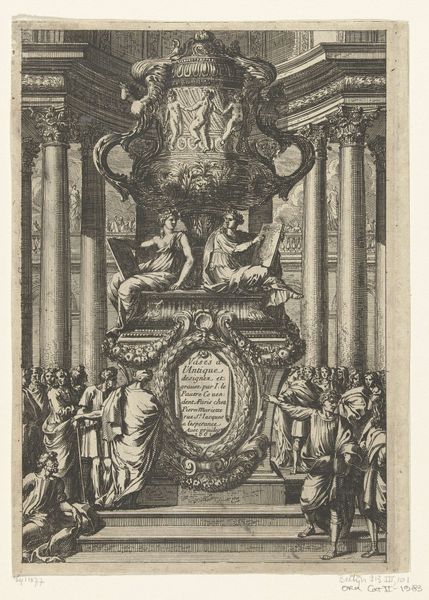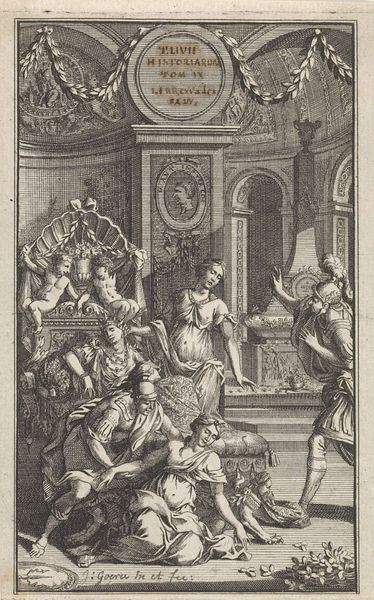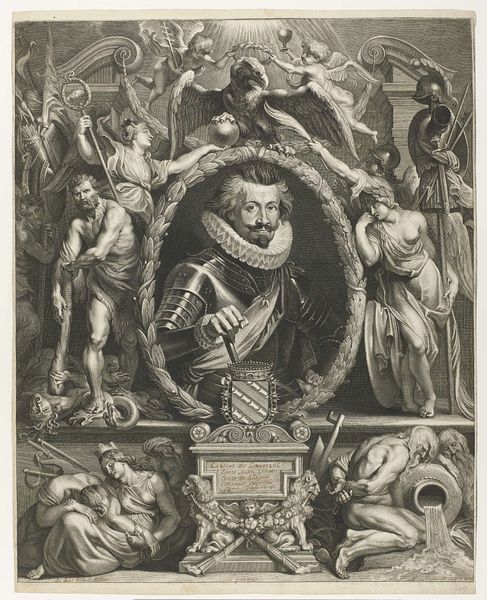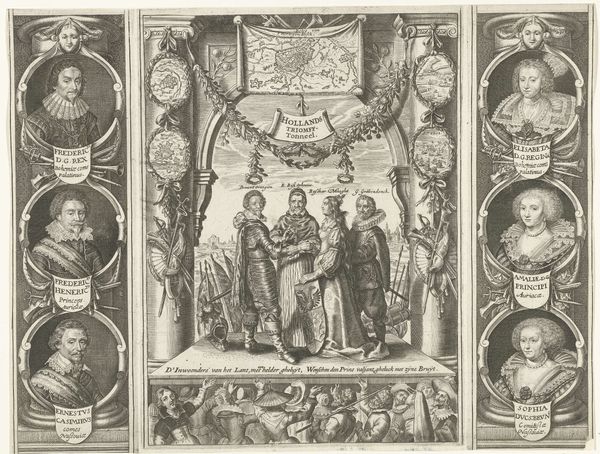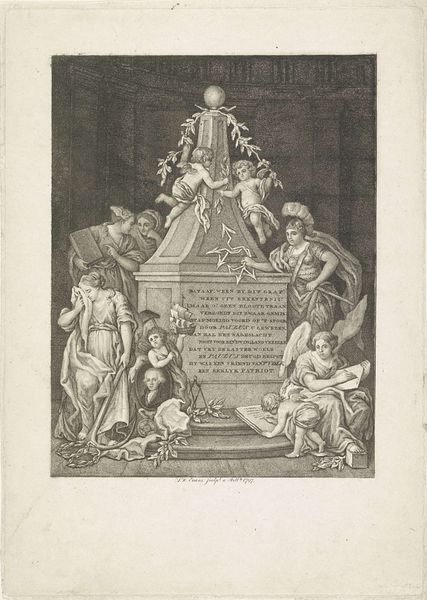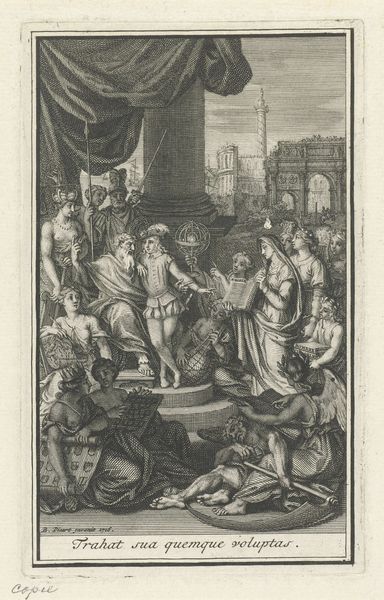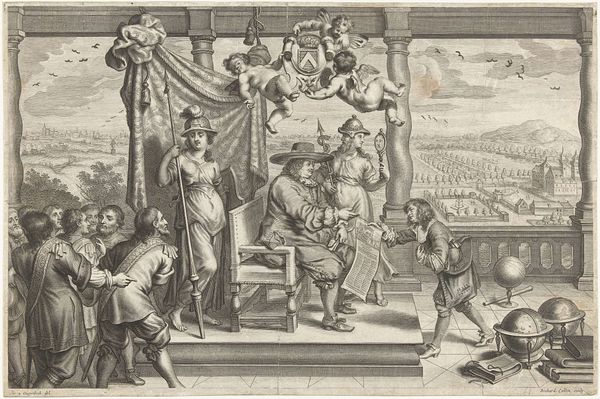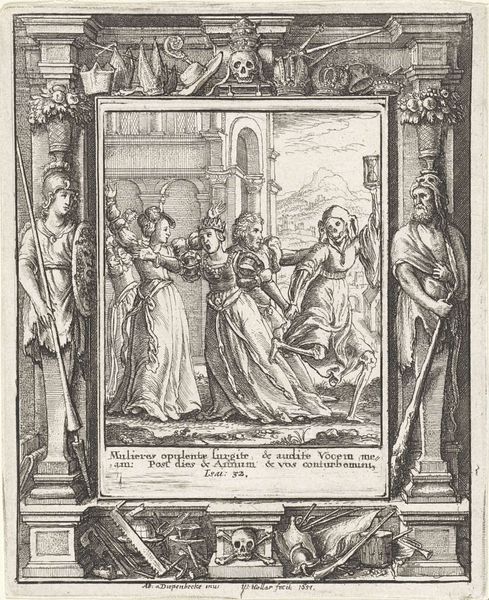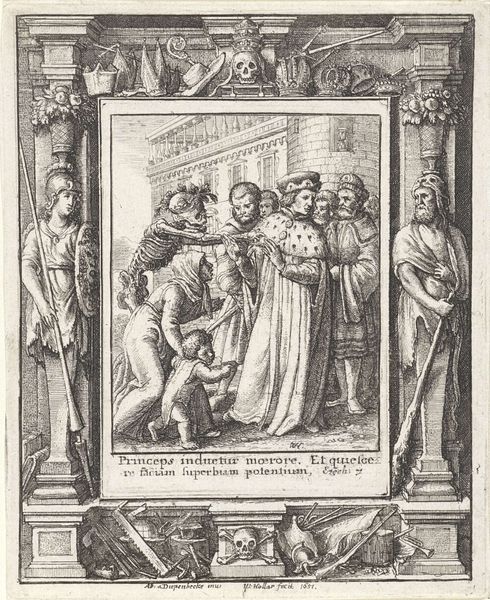
print, etching, engraving
#
allegory
#
baroque
# print
#
etching
#
old engraving style
#
group-portraits
#
history-painting
#
engraving
Dimensions: height 175 mm, width 152 mm
Copyright: Rijks Museum: Open Domain
This print, depicting the Coronation of William III and Mary Stuart, was made by Jacobus Baptist around 1689, using the technique of etching. Etching involves coating a metal plate with wax, scratching an image into the wax, and then immersing the plate in acid. The acid bites into the exposed metal, leaving behind an incised line. This painstaking method allowed for the detailed rendering of the scene, packed with allegorical figures and symbolic elements, like the scales of justice and cherubic figures. The etched line lends a crispness to the scene, underscoring the importance of law and governance, with the scene being busy with onlookers. Baptist has captured the essence of a pivotal moment in British history, making use of the repeatable process of printmaking. The Coronation is made accessible to a wider audience, reflecting how printmaking played an essential role in shaping public perception. While it doesn't have the aura of a unique work of art, this etching has a special kind of power. It reminds us that the story of art is inseparable from the history of making and distribution, and helps us to look beyond the traditional boundaries between high art and craft.
Comments
No comments
Be the first to comment and join the conversation on the ultimate creative platform.
